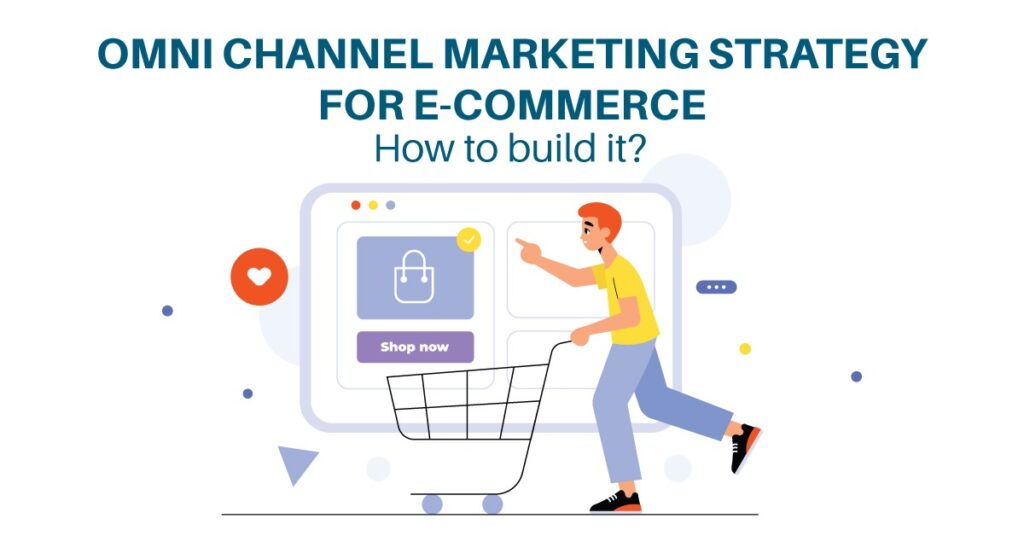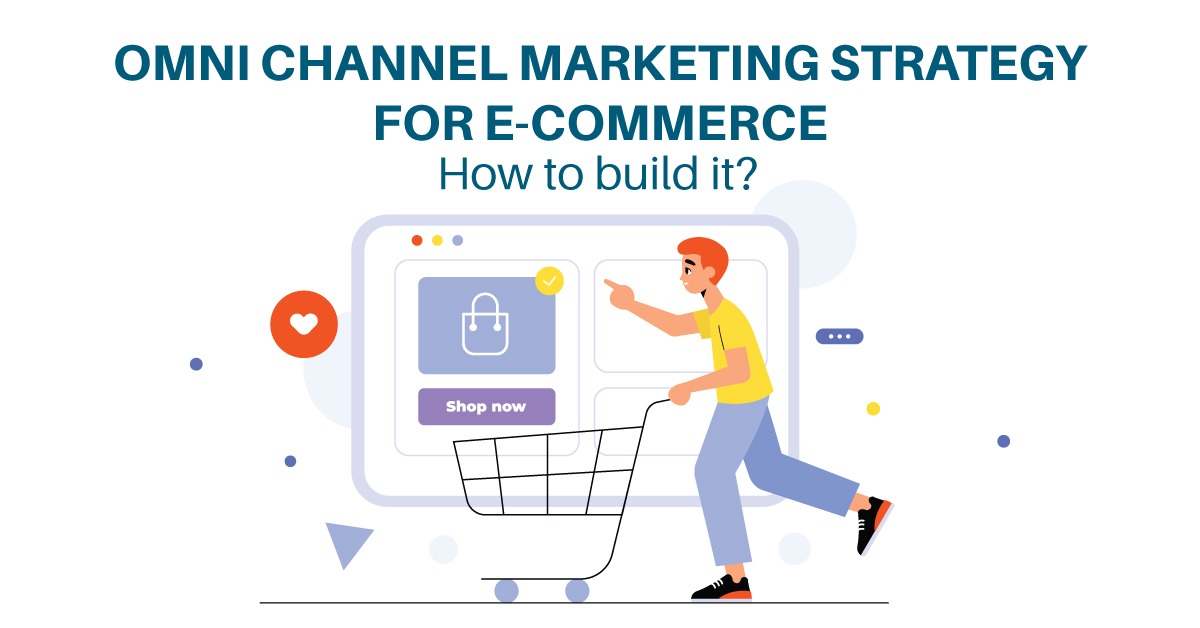
Google and Temasek predict , the eCommerce industry of South East Asia to grow by $102 billion by 2025.
As online marketing and social media are becoming more and more popular, ‘digital-only’ shopping approach is also increasing. Many millennials shop online and many browse in-stores before purchasing online.
Giving your customers suitable guidance while they are on their online purchase journey is vital for eCommerce companies. An omnichannel marketing strategy helps convert a potential customer into a buyer. Omni-channel is a way where retailers maintain both physical and digital presence.
Who wouldn’t appreciate a suitable online recommendation that matches our taste and requirement?
It is an era of personalization and most e-commerce marketers know that personalization works very well with Gen Z!In this article, we will meticulously discuss omnichannel marketing strategy for ecommerce and how to Build an effective strategy to benefit from it, but before we go further, let’s understand.
What is Omnichannel marketing?
It refers to the multichannel sales approach that provides customers with an integrated shopping experience. Each channel contributes to creating a unified experience whether shopping from a mobile, desktop, tablet, brick and mortar store, in parking or anywhere, the experience will be seamless. Omnichannel marketing strategies include examples like receiving a cart abandonment email, receiving retargeting ads, SMS message for sale updates etc.
There are many definitions from various brands some of those are mentioned below:
According to HubSpot’s definition, “The ability to deliver a seamless and consistent experience across channels on the devices that your consumers are using to interact with your business.”
Google says, “Marketing strategies that are geared toward enabling customers to convert on any channel.”
Let’s be clear omnichannel marketing and multichannel marketing are two different things, though they both rely on multiple channels to reach customers. Most of the marketers use these terms interchangeably, however, though their essence may be the same, but there is a thin line that differentiates both.
In multichannel marketing communication, channels work in isolation and there’s no connection in any of them. On the other hand, Omnichannel marketing is an evolved concept where channels work in coordination and harmony with one another.
Businesses that adopt omnichannel strategies achieve 91% greater year-over-year customer retention rates compared to a business that doesn’t.
87% of customers think brands need to put more effort into providing a seamless experience.
The main purpose of omnichannel marketing strategy is a combined strength of each communication to deliver a consistent and compelling brand message. It allows brands to provide a personalized and unified message that’s directly relevant to what they need or want, irrespective of the channel they are using.
Why is it important for eCommerce business?
“Just having satisfied customers isn’t good enough anymore. If you really want a booming business, you have to create raving fans.” – Ken Blanchard
According to Harvard Business Review along with US retail company: 7% of buyers were only online buyers;20% of were store-only shopper and a whopping 73% used multiple channels to complete their shopping journey. These stats show that omnichannel marketing is no longer just an option; it’s now turning into a necessity.
E-Commerce businesses need to find creative ways to acquire, engage and retain their customers by creating a positive and personalized experience across multiple touchpoints.
Customers prefer buying from brands where they already had a great experience. E-Commerce market is competitive, everyday brands are putting in efforts to grab customers’ attention. Every brand wants to earn customer loyalty, persistently improve online brand image, and that’s a common exercise across all the channels.
Present generation expects a seamless experience that matches their expectation. This also helps brands create a perception inside their customers mind which can make/break their business.

Hence if you are a business that wants to create an impact and difference. Omnichannel marketing strategy is a big YES!
How To Build Your Omnichannel Marketing Strategy For ECommerce?
Inspect your existing strategy
The very first step before you plan anything new is to examine what you already have! It will help you identify the loopholes and the ideas that worked. Before you decide to discuss it with your team, make sure you have analyzed the data to know what worked great and the areas where your organization needs to improve strategy to interact with customers at various stages of sales cycle. Here customer reviews can come in handy, you can always go back to your website, social media or emails to check reviews. Never leave a single channel to monitor before you sit over to build a new one. The best thing for a marketer is to think like a customer when they are building an omnichannel marketing strategy. The best way to find out where your e-commerce website is falling short is to check out the entire process from app installation to checking out. Even a small fix can improve your strategy. Brainstorming on your existing strategy is your first step!
Understand your audience
Any marketing strategy is incomplete without defining an audience. You need to know how, where, and when are they ready to engage, and will eventually become a buyer. Prioritizing your customers is an essential element of an omnichannel strategy. Be as specific and detailed as possible before you begin crafting your strategy. Accumulate data on what specific items your customers prefer, how often do they connect, and what is their interest in pricing. Get as much feedback as you can on every stage. As a marketer, it’s one thing to have valuable and interesting content to share, but if it is not reaching the right customer touchpoint; money, time and resources go in vain.
Analyze how your customers interact
Once you understand your customers, the next step is to analyze your customers’ behavior and how they interact with your brand. Analyzing customers is not limited to age, gender, geography, and behavior but how they behave online before making a purchase decision. What are the channels they use to connect with you, and how? This whole analysis will help in creating a personalized customer journey.
Personalization
This is an era of personalization. Nearly 90% of the customers switch from one device to another to accomplish a goal. If you want to get customer traffic on your E-Commerce website/app then you need to target all of these channels- SMS, Emails, Push Notification or WhatsApp. But always remember to personalize communication for every channel.
Retargeting
Obviously a customer is not going to buy from you just at an instance. You can use social media banners, banner ads etc. to stay in the customer’s mind, this will increase your conversion rate. Retargeting helps with brand recall, engagement and ultimately improves ROI or conversion.
Automation
When you are planning your omnichannel marketing strategy and communication, leverage the benefits of your automation tools to effectively optimize your marketing strategy. Automation tools can save time and help you segment audience, personalize the message, schedule campaigns, emails and messages and also give you detailed analytics to measure the effectiveness. There are dozens of automation tools available for different channels and capabilities that can strengthen your omnichannel marketing strategy.
Make your organization ‘customer-centric
Customer must be the center of all your strategies but for that to happen you also need to ensure that your team is also on the same page as you. Ensure that customer’s data is being used by every member to deliver a wholesome end-user experience. The more they know about the customer, the better the reach and engagement. The crux is – ensure every member of your team is on board with your approach and is using it effectively to deliver results.
Test, Test and Test Again
The cookie-cutter approach doesn’t fetch profitable results, and with omnichannel marketing campaigns, it is advised to have A/B testing. It will again help in measuring the outcome and identify what’s working and what’s not. Based on the outcome, you can do required alterations in messages, images, schedules and segmentation. Always make this a priority of all your marketing strategies to remain on the top of the game. You can also try tools that can help you track your process; activities and you can update or re-audit it accordingly for improving customer experience.
Omnichannel marketing is an evolution, where many diverse factors work in tandem to create an advanced customer experience. Of course, it’s not the easiest marketing strategy to execute; there is a high requirement of coordination and streamlining of service. But it eventually pays off and provides you with more opportunities to grow.
Get bespoke Websites design, web development, brand awareness, employer branding, lead generation, social media marketing services, search engine marketing services, copywriting, creative design and other digital Marketing services for your small business, restaurants, fitness center, dental clinics, enterprise business, startups, law firms, partnership firms, NGO’s, events.
WhatsApp your query or write to us info@amsdigitalagency.com for a 30 minute free consultation call.













